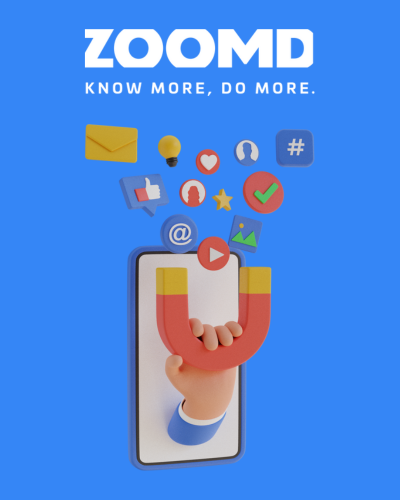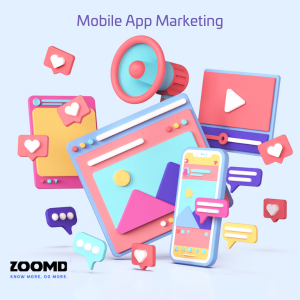In today’s competitive app market, gaining visibility and driving app installs requires a well-executed mobile app marketing strategy. From optimizing app store listings to leveraging social media platforms and running targeted campaigns, app marketers have various approaches to explore. In the following blog post, we will explore several tactics and paths for mobile app install campaigns and discuss how to create an effective mobile app marketing plan to drive app growth.
If you’re an app marketer, you know how important it is to boost your app installs and craft effective campaigns. But with so many channels and platforms to choose from, how do you decide where to invest your budget and time?
First, what you can and should do is invest efforts on the organic steps, owning your app assets:
App store featuring:
Your app viability on the App and Play stores can help you reach audiences that are actually looking for a solution or a game like your app. Focus on creating an app with a unique value proposition, user-friendly interface, and positive user reviews. By delivering an exceptional user experience, your app stands a higher chance of being featured in app store recommendations, leading to increased visibility and app installs.
In-app referral program.
Encourage existing users to refer the app to their friends by offering incentives such as exclusive rewards or discounts. This leverages the power of word-of-mouth marketing and can lead to increased app installs.
More efficient ways to promote your app is through paid advertising, especially using performance channels and programmatic media buying. These methods can help you reach your target audience at scale, optimize your campaigns in real-time, and measure your results accurately.
As you may know, mobile app install ads are a type of ad format that encourages users to download your app directly from the ad. They are available on various platforms, such as Google Ads, Facebook Ads, and TikTok Ads, as well as ad networks and mobile app DSPs (demand side platforms).
Mobile app install ads can help you reach potential users who are likely to be interested in your app based on their demographics, interests, and behaviors. You can also optimize your campaigns for different goals, such as impressions, clicks, installs, or conversions.
But how do you create and run successful mobile app install ads? Here are some of the key steps you need to follow:
- Define your target audience and budget. Before you start creating your ads, you need to have a clear idea of who you want to reach and how much you are willing to spend. You can use tools like Google Analytics, Facebook Audience Network, or TikTok For Business to research your audience and find out their preferences, habits, and pain points. You can also use these tools to set your budget and bid strategy based on your campaign objectives and expected results.
- Choose the right platform and ad format. Depending on your target audience and goals, you may want to choose different platforms and ad formats for your mobile app install ads. For example, if you want to reach a young and creative audience, you may want to use TikTok Ads, which offer various interactive and engaging formats, such as TopView, In-Feed Video, or Branded Hashtag Challenge. If you want to reach a broad and diverse audience, you may want to use Google Ads, which offer various formats across different channels, such as Search, Display, YouTube, or Gmail. If you want to reach a highly targeted and loyal audience, you may want to use Facebook Ads, which offer various formats across different placements, such as News Feed, Stories, Messenger, or Audience Network.
Once you maximize the opportunities on the major search and social channels, it is highly recommended to start exploring the vast global reach of a DSP (demand- side – Platform) and also the various ad networks and SDK’s that have been proven to accommodate the reach and achieve the goals app owners are looking for.
Programmatic media buying can help you:
- Save time and resources: You don’t have to negotiate with publishers or manage multiple contracts manually. You can use a single platform to access a large and diverse inventory across the web, mobile, apps, video, and social media.
- Reach your target audience: You can use data from various sources, such as your own app analytics, third-party data providers, or publisher data, to segment and target your audience based on their characteristics, behaviors, preferences, or intents.
- Optimize your campaigns: You can use real-time feedback and insights to adjust your bids, budgets, creatives, or targeting strategies. For example, Zoomd DSP using advanced technology for media buying such as machine learning (ML), to automate campaign optimizations and improve your app install performance campaigns.
- Measure your results: You can use advanced analytics and attribution tools to track your campaigns across different channels and platforms. You can also use key performance indicators (KPIs), such as cost per install (CPI), cost per action (CPA), lifetime value (LTV), or return on ad spend (ROAS), to evaluate your success.
- Create compelling ad creatives and copy. Once you have chosen your platform and ad format, you need to create your ad creatives and copy that will attract and persuade your audience to download your app. You need to make sure that your ad creatives and copy match your app’s branding, value proposition, and features. You also need to make sure that they are clear, concise, and relevant to your audience’s needs and interests. You can use tools like Canva, Adobe Spark, or Animoto to create stunning visuals and videos for your ads. You can also use tools like CoSchedule Headline Analyzer, Hemingway App, or Grammarly to write catchy headlines and error-free copy for your ads.
- Test and optimize your campaigns. After you have launched your campaigns, you need to monitor their performance and optimize them accordingly. You need to track metrics like impressions, clicks, installs, conversions, cost per install (CPI), return on ad spend (ROAS), retention rate, lifetime value (LTV), etc. You also need to test different variations of your ad creatives and copy to see which ones perform better. You can use tools like Google Optimize, Facebook Split Testing, or TikTok Smart Optimization to run A/B tests and optimize your campaigns automatically.
With these examples and ideas for effective app install campaigns, your app can gain the performance and growth you are looking for. But all these take time and resources not all marketers have. You need to focus on the channels and tactics that you know and push effectively.
For the rest, high-volume campaigns, Zoomd’s technology and experienced media teams can help you achieve the goals you’re looking for.
If you want to learn more about mobile app marketing and how Zoomd can help you grow your app business with our powerful User acquisition platform or mobile app DSP platform, contact us today!






